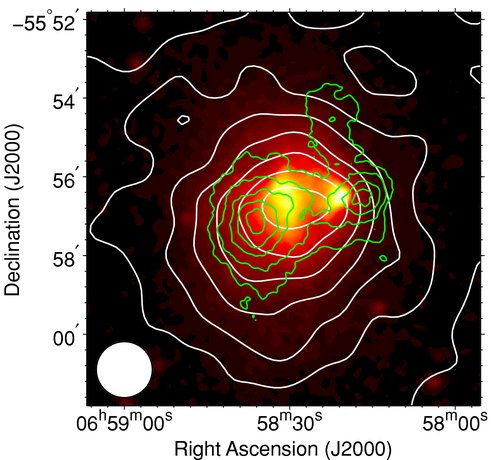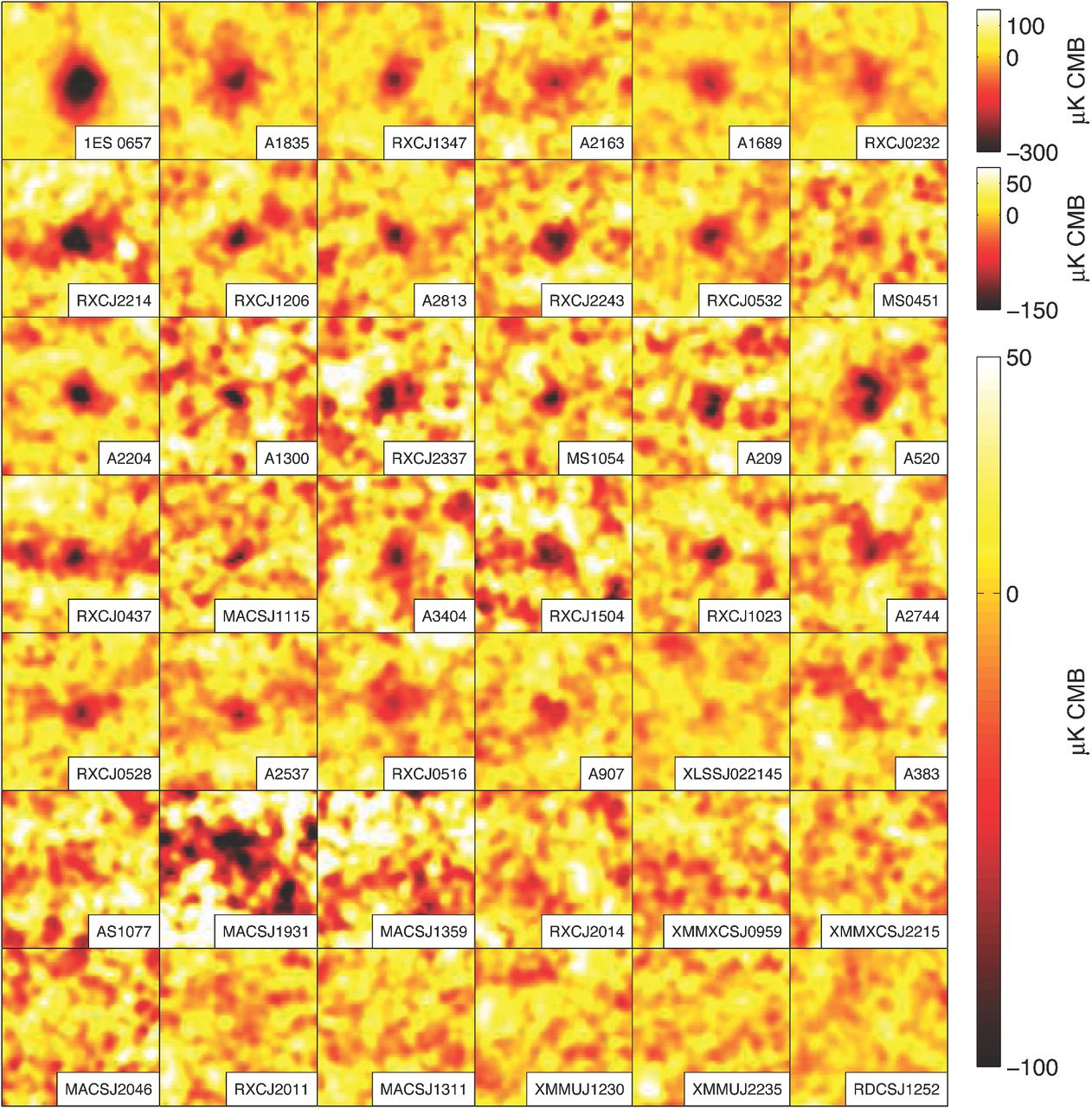APEX-SZ was a PI instrument that observed on the APEX telescope for a few weeks every year between 2007 and 2010. It's primary scientific goal was to measure galaxy clusters using the Sunyaev-Zel'dovich effect (SZE). In the SZE, cosmic microwave background photons scatter off the hot electrons in the intracluster medium and introduce a spectral shift. APEX-SZ observed at a frequency of 150 GHz where the SZE shows as a decrement compared to surrounding region. The integrated SZE flux can then be related to the total mass of the galaxy clusters, providing a means to measure the growth of structure in the universe by tracing the clusters.
The APEX-SZ receiver hosted what would be considered a small focal plane by current standards, with 280 spiderweb TES bolometers.
The Instrument
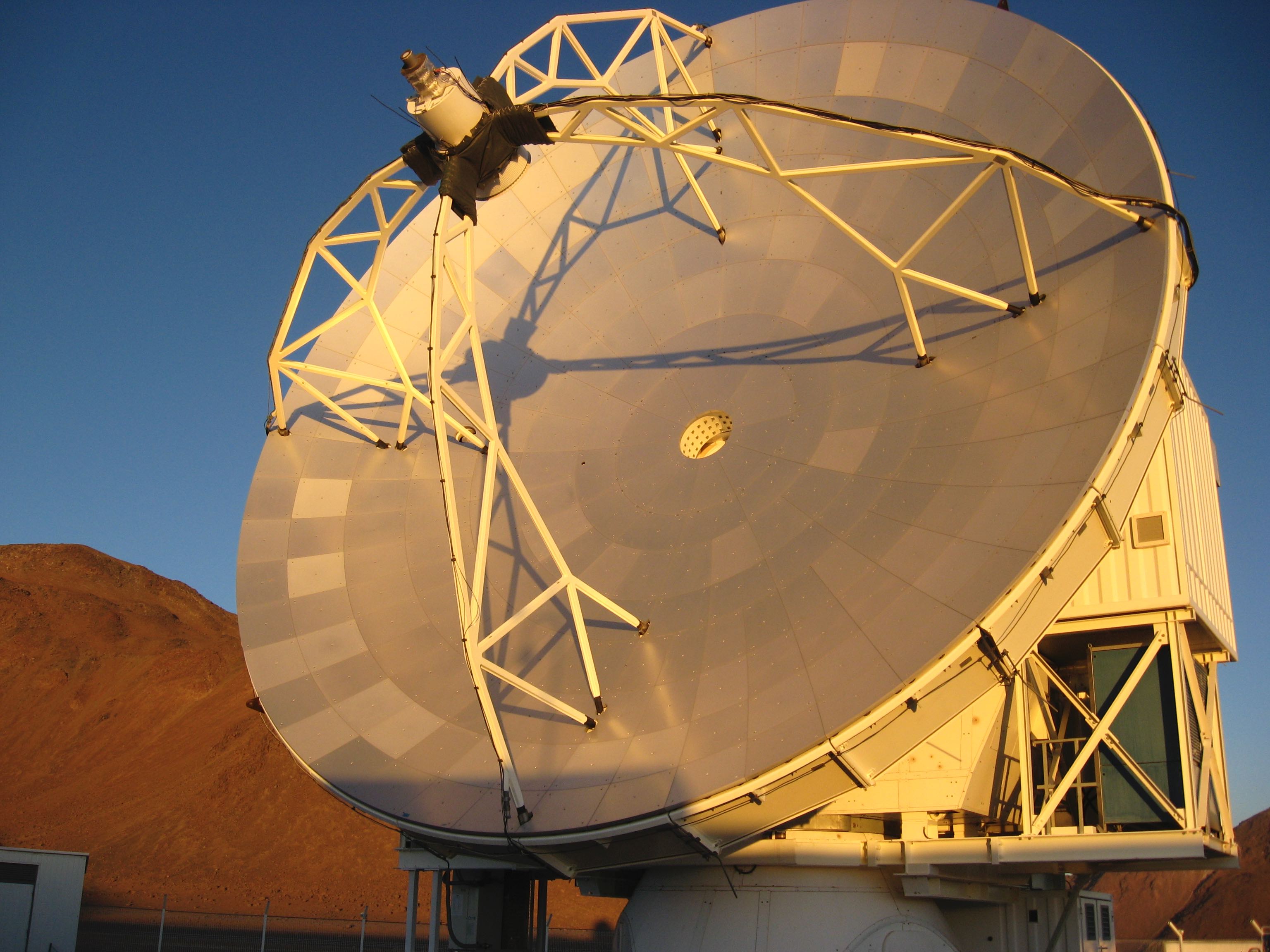
The APEX telescope is sited on the Chajnantor plateau of the Atacama Desert in Northern Chile. The high alitude (~5100 meters) and dryness of the Atacama desert provides excellent conditions for millimeter-wavelength observations. The primary mirror has a diameter of 12 meters.
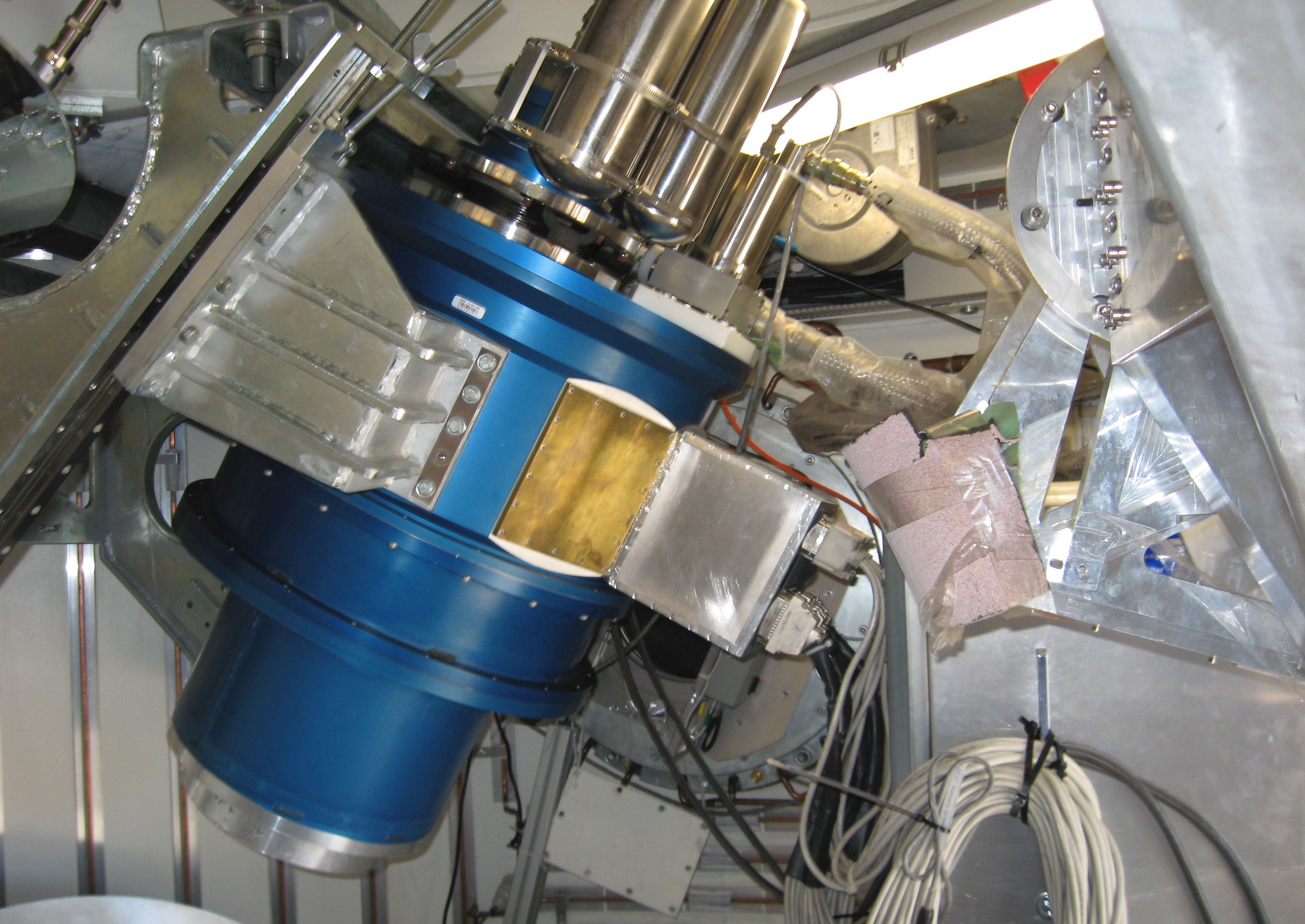
The APEX-SZ receiver installed in the Cassegrain cabin of the telescope. Light is coupled into the receiver from a mirror at the bottom left up through optics and into the spiderweb bolometer detectors in the middle of the blue cyrostat.
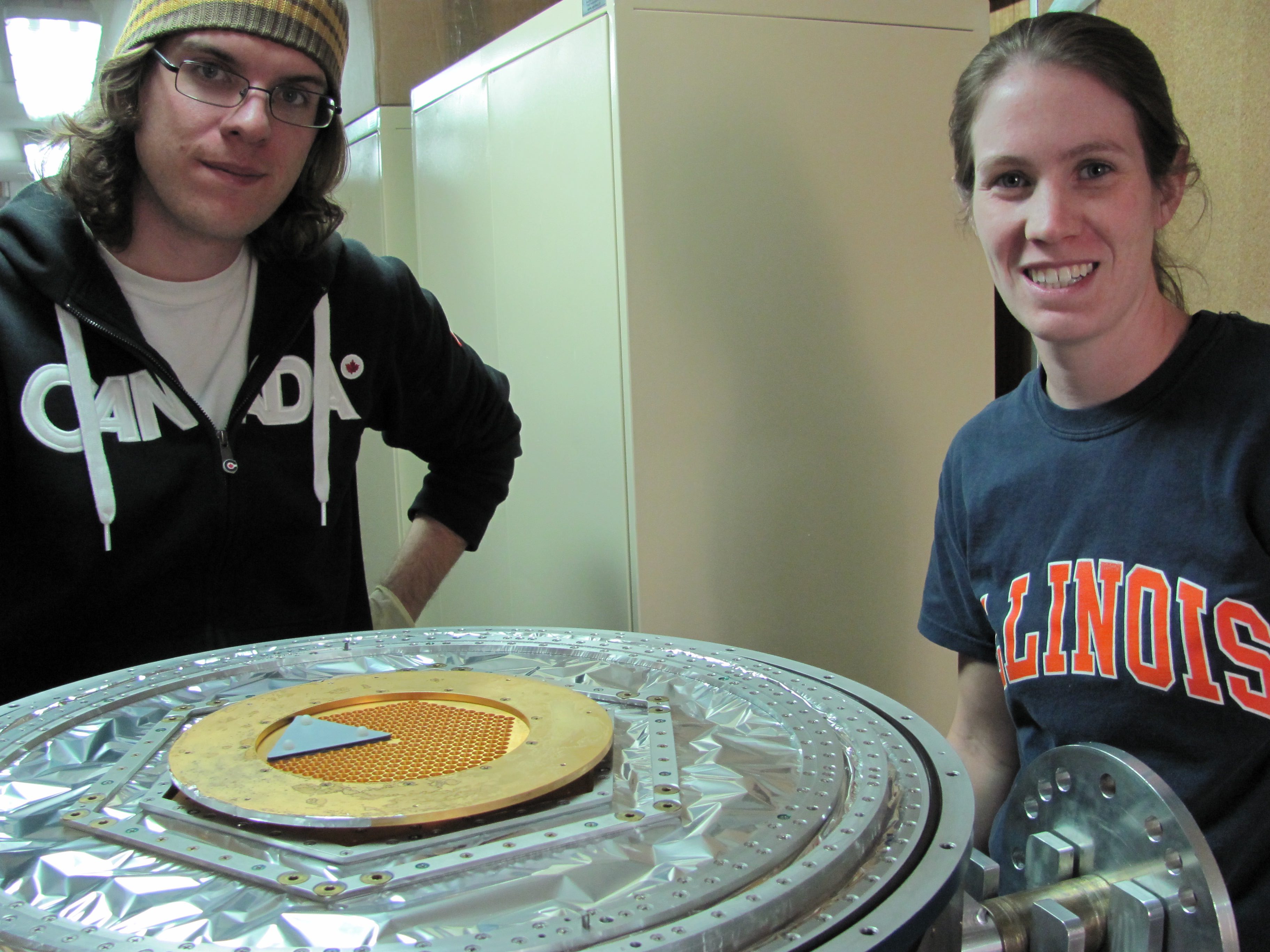
Looking at the expose inside of the APEX-SZ cryostat during on of our detector upgrades. In the center is an array of feedhorns that couple the light down onto the individual bolometers underneath.




